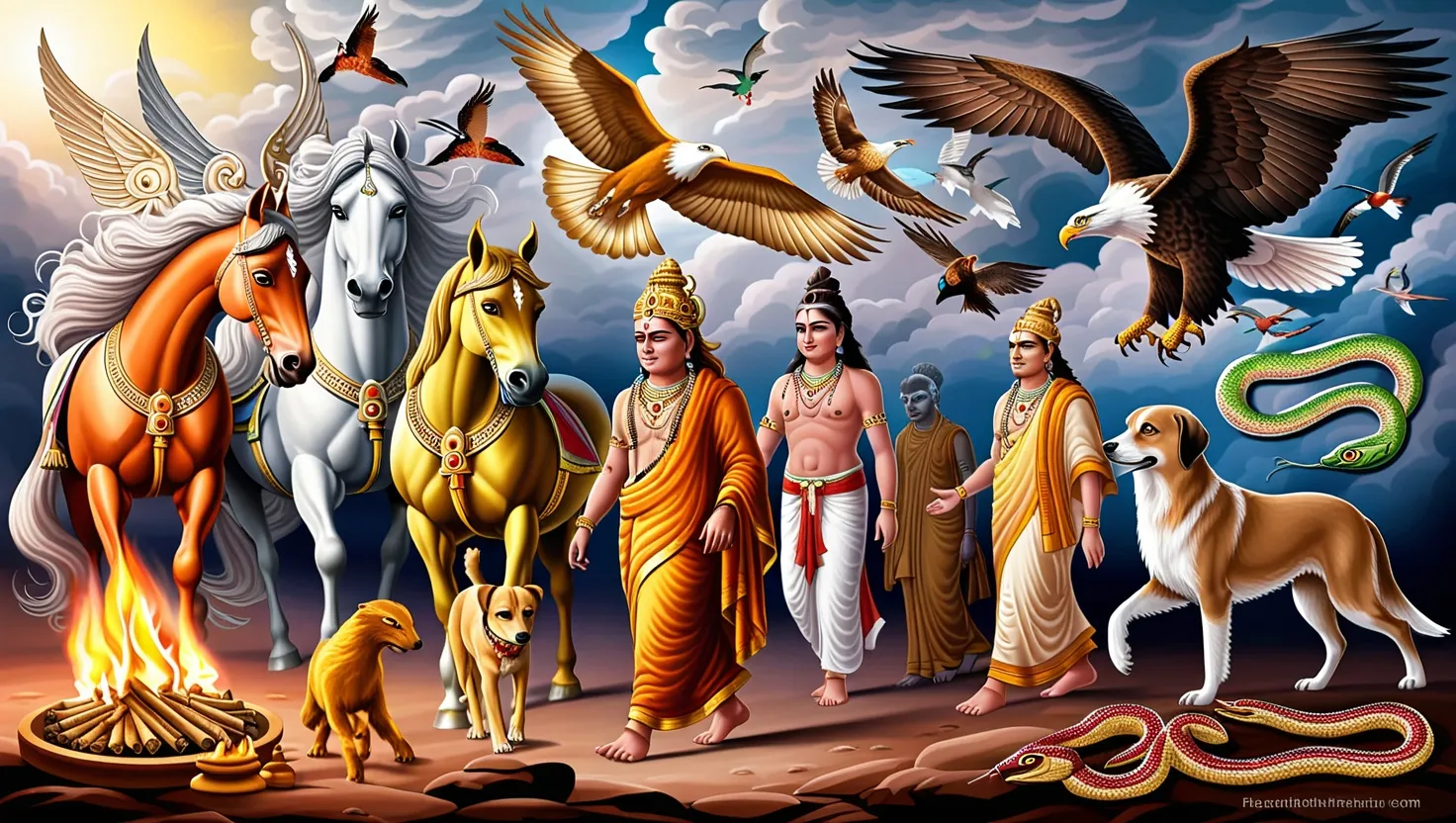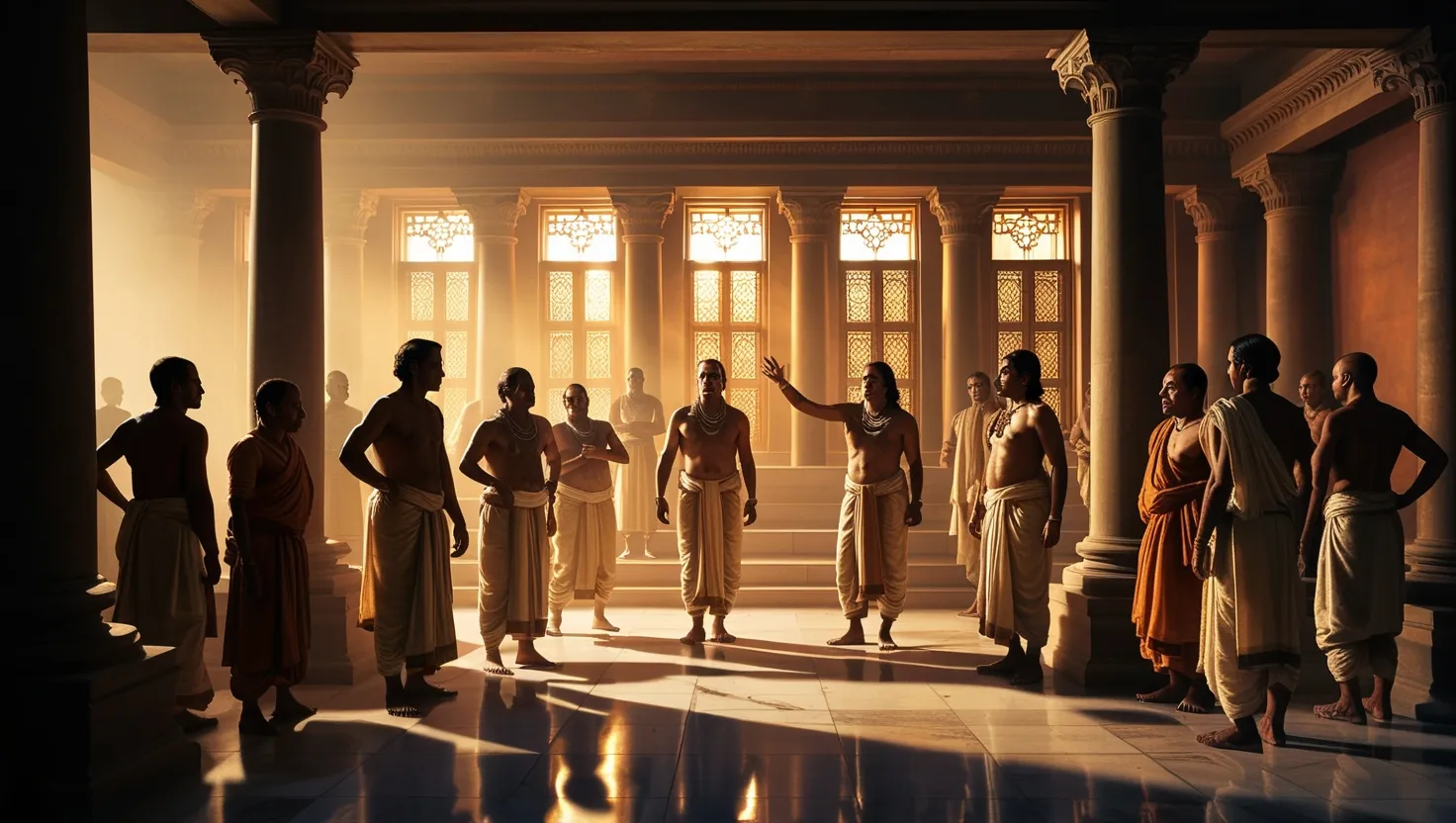King Janamejaya, the son of King Parikshit, took over the throne of Hastinapura after his father’s untimely death. Parikshit, the last remaining heir of the House of Pandu, met his end from a snakebite. This wasn’t just any snakebite; it was the fulfilment of a curse laid upon him by a sage, carried out by the serpent chieftain, Takshaka. As you might guess, Janamejaya was filled with a burning desire for revenge. He wanted to eradicate all snakes, and he wasn’t just thinking small. He planned a grand snake sacrifice, known as the Sarpa Satra, to wipe out every living serpent.
Janamejaya’s quest for revenge found its spark when a Brahmana Sage named Utanka showed up at his court. Utanka was astonished to see Janamejaya living it up as a king, while Takshaka, his father’s killer, was still alive and slithering. He didn’t hesitate to point out the injustice and gently nudged Janamejaya towards taking action. Up until that moment, Janamejaya, still a child during his father’s death, had no clue about what exactly had happened. After some investigation, his courtiers informed him that it was Takshaka, the serpent king, who was responsible for his father’s demise.
Utanka proposed an ancient remedy – a snake sacrifice, a ritual mentioned in the Puranas. This ritual, if performed correctly, would strip the snakes of their power, causing them to fall into the sacrificial fire. The idea of incinerating Takshaka and all other snakes was too enticing to resist. Janamejaya gave the green light, and preparations kicked off. Skilled workers started building a special platform, and various valuable offerings along with Brahmanas were assembled for the big event.
However, a professional builder issued a stern warning. He predicted that the sacrifice might be sabotaged by a Brahmana. But Janamejaya, stirred by the hope of avenging his father’s death, pressed on. He ordered his gatekeepers to be extra vigilant and only allow those he gave the nod to, expecting potential disruptions.
As the day of the snake sacrifice drew near, Janamejaya’s resolve only hardened. The platform was ready and the priests were set. They started the ritual by pouring clarified butter into the fire, chanting hymns that carried power. Snakes began to fall into the fire in all shapes and sizes. Takshaka, recognizing the imminent danger, sought shelter. He found safety under the protection of Indra, the king of the gods.
Even Vasuki, the mighty king of snakes, got jittery seeing this relentless attack. Worried about his own safety, he turned to his sister Jaratkaru. She, in turn, sought help from her son, Astika. Now, Astika was a young but wise sage, born to a Naga mother, Manasa, and a Brahmin father. His words had a sort of magic, compelling enough to catch Janamejaya’s attention.
Astika’s intervention was powerful. He reasoned with Janamejaya, who couldn’t help but listen. In the end, Janamejaya decided to set Takshaka free and halted the massacre of the Nagas. This brought to an end an era of hostility, and from that moment forward, the Nagas and the Kurus maintained peace.
The grand sacrifice that Janamejaya set in motion took place on the banks of the river Arind at a place now known as Parham. There’s a masonry tank called Parikshit Kund in the Mainpuri district that marks where the sacrificial fire burned. According to local legends, the virtue of that ancient sacrifice still protects the region, making the snakes around there harmless.
The tale of Janamejaya underscores not just a thirst for vengeance but the ripple effects our actions can have. His decision to conduct the snake sacrifice was driven by rage and the idea of justice. But it was the wisdom of Astika that brought an end to the unfolding chaos, showing us the importance of seeking wise counsel and reflecting on the larger impact of our decisions.
Beyond the snake sacrifice, Janamejaya played a pivotal role in preserving history. He was the first to hear the tale of the Mahabharata. This epic, narrated by Vaishampayana, a devoted student of Vyasa, spans the history and the tales of his ancestors all the way to the epic Kurukshetra war. The Mahabharata’s retelling during Janamejaya’s times ensures that he remains a key figure in conserving the vast and rich heritage of his lineage.
In wrapping up, King Janamejaya’s story is woven with strands of revenge, wisdom, and a determination to preserve history. His vengeful quest, expressed through the dramatic snake sacrifice, speaks volumes about the complex nature of human emotions and the value of wise guidance. This ancient episode not only brings to light the perennial conflicts and reconciliations but also spotlights Janamejaya’s role in carrying forward the grand legacy of the Mahabharata.
The story of Janamejaya reminds us of the fragile balance between seeking justice and understanding the broader consequences of our actions. It’s a timeless tale that continues to resonate, urging us to reflect on our paths and the histories we help sustain.






